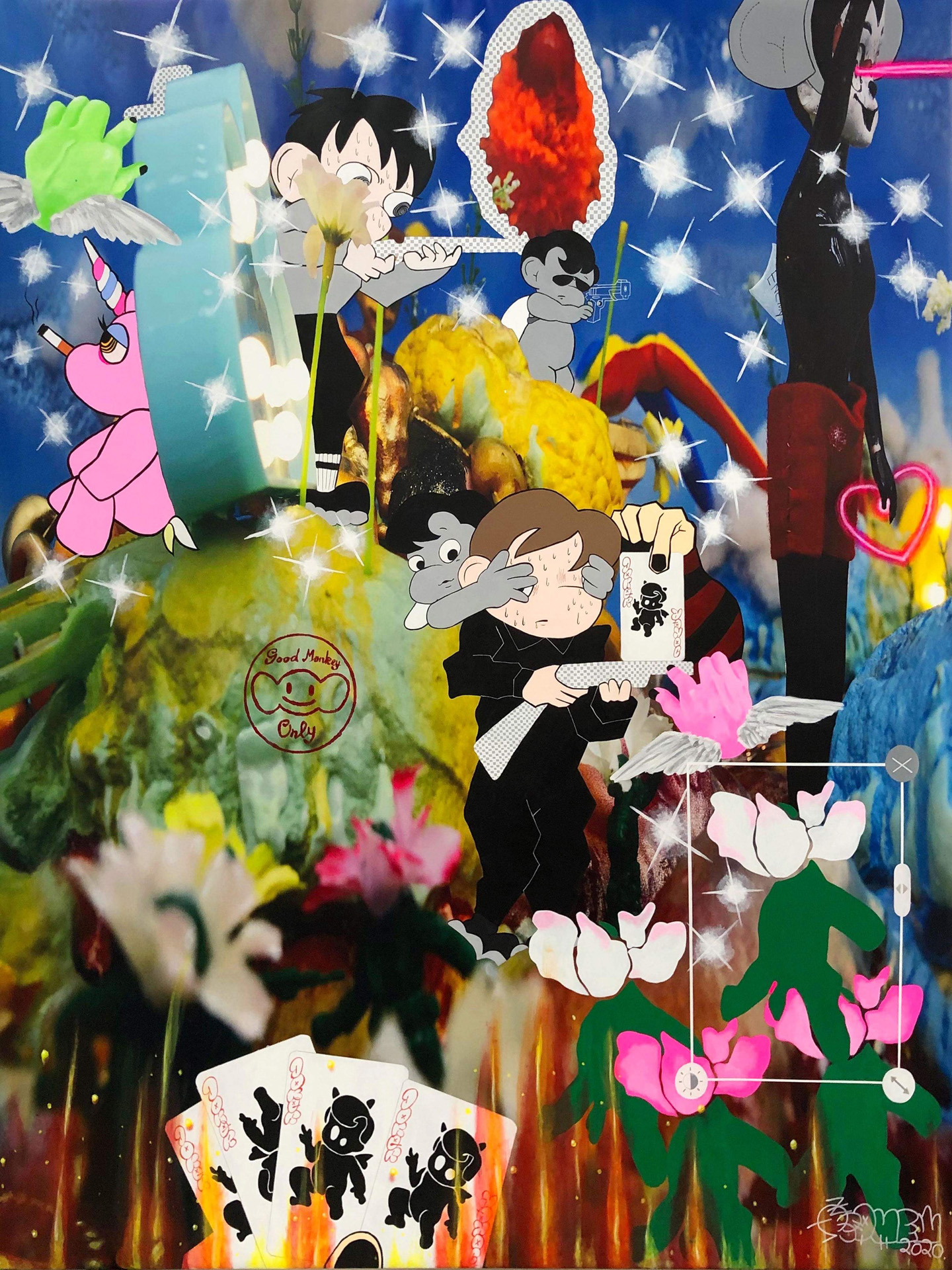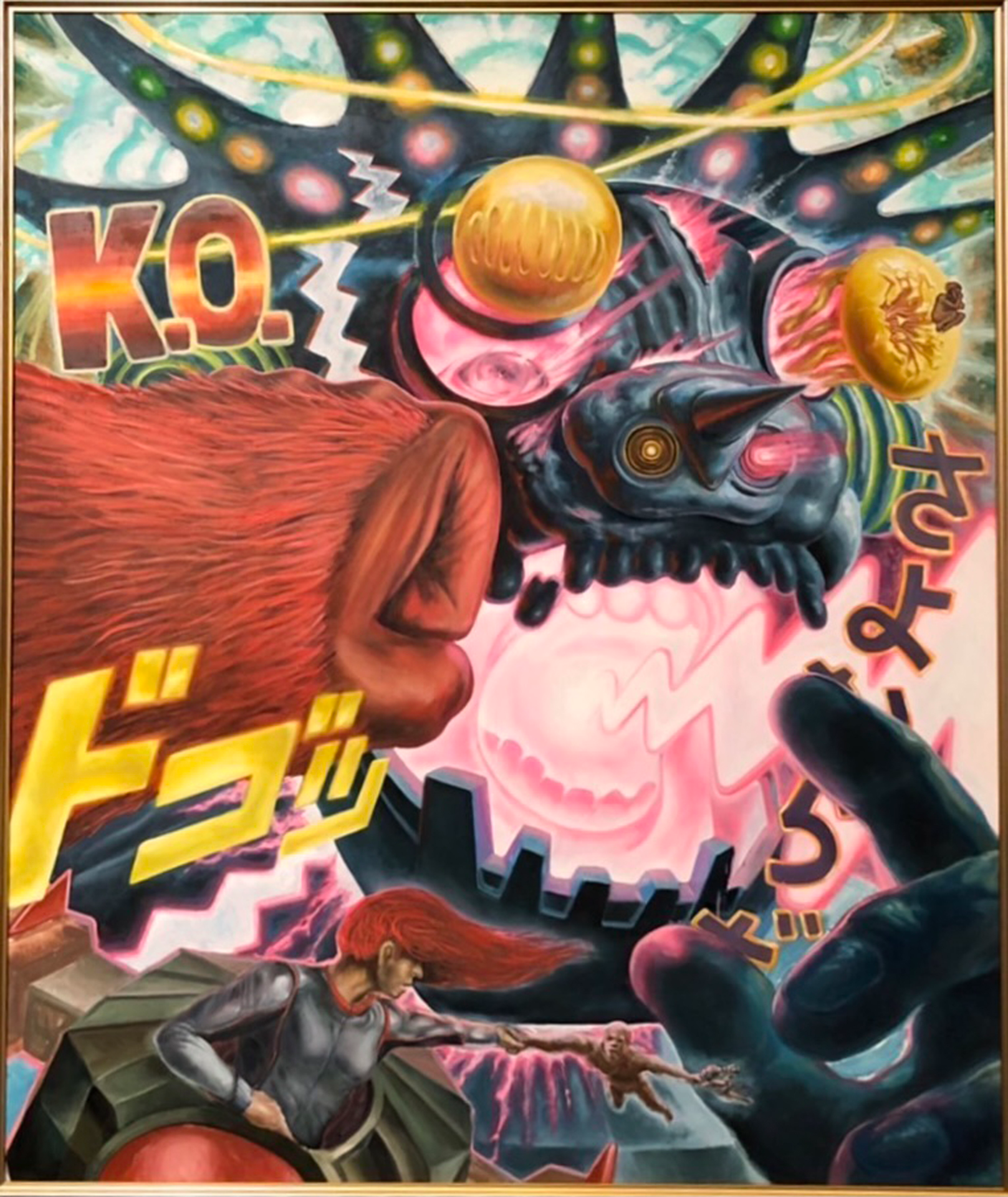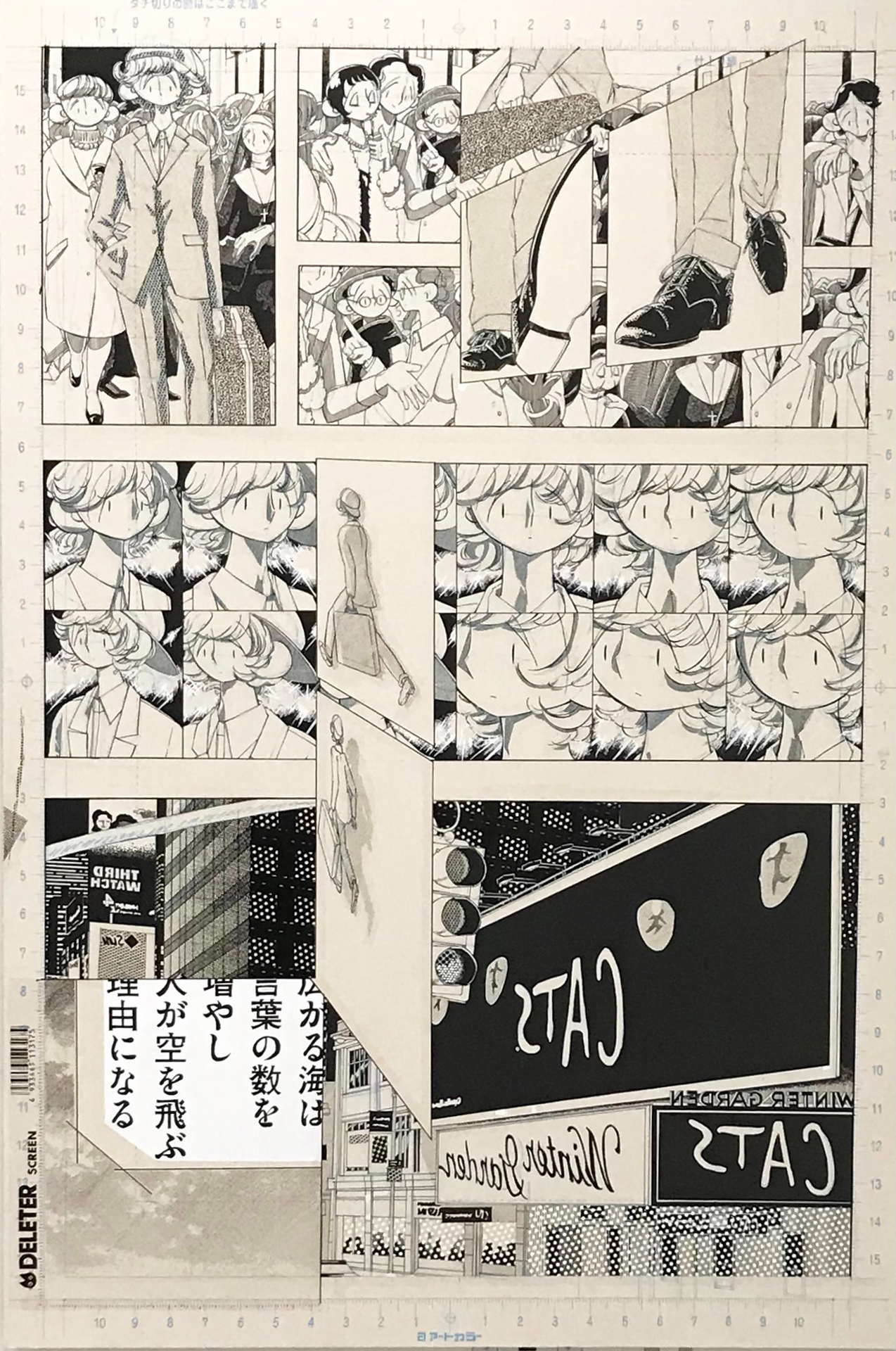A young artist's humanism shakes up pop culture
This exhibition focuses on three artists who are expected to have a bright future.
These include Kameyama Haruka, who uses smartphone image processing apps to create works based on the keywords "entertainment and contradiction"; Tsuda Kotaro, who uses characters such as robots and heroes as motifs to view the world from the perspective of its relationships with others; and Azuma Shunyo, who elevates manga frame expressions from ephemeral to lasting paintings.
Gallery Shop Marco, which opened in 2020, is a cross-cultural space that selects everything from vintage clothing to art by contemporary artists with the concept of "clothing and art that nurtures people."
"For example, the specifications of hunting jackets and military wear, such as the stitching, fabrics, and buttons, have changed over the ages. Vintage clothing that is over 100 years old can give us a glimpse into the lifestyles of those who wore it and for what purposes. It is something that was born from a relationship with the times and society, and could not be established by the will of the maker alone," says owner Komoda.
As the times and society influence human creativity, I came to the conclusion that clothing products are also conceptual art in which context is important, and I view fashion and art side by side as a nexus of the times and the ideas of artists.
A fantastical and realistic screen that mixes fact and fiction
This time, we focus on young artists in their 20s who use techniques from pop culture such as anime and manga to depict the nexus of the times, creating works that exude a dramatic power.
Haruka Kameyama creates works with the keywords "entertainment" and "contradiction." She overlays characters created through analog painting onto diorama photographs made from toys and other objects, and makes full use of smartphone image processing apps to create a light-hearted and entertaining worldview reminiscent of anime for children. In her works, contrary to the pop appearance of the characters and processed motifs, she depicts a mixture of good and evil as "the given unfortunate settings and strangeness are all mixed together."
Kotaro Tsuda, whose paintings are reminiscent of special effects movies, depicting robots, dinosaurs, and heroes, was born and raised in Hokkaido, where he still lives today. After he began learning how to paint, he spent some time thoroughly painting self-portraits, during which he realized that self-exploration was the most effective way to look at the world. He also studied Baroque painting at the Graduate School of Hokkaido University of Education, and, following the dramatic expression techniques that appeal to the reality of stories told in the Bible, he also incorporates the visual expressions of manga, which he considers his own identity, to paint fantastical realities that mix fact and fiction. This suggests the world in which we live today, where the real and virtual are beginning to blend together.
Azuma Haruyo, who began drawing manga in elementary school, believes that the "frames" that are often overlooked in manga are not pieces that complete a story, but pictorial expression. This can be seen in her life's work, "Experimental Manga (Comics are like Music)," which she draws one frame at a time in time with music. Music, as an art of time, is produced and then fades away, and the idea that the work is complete only when all the sounds have disappeared from the sequence is superimposed on manga expression, and a world appears from the continuity of the frames. In this way, she aims for frame expression, as an art of the moment, to win the permanence of painting.
The never ending quest for humanity
Komoda likens the works of these three artists to doors, saying that their common appeal is "doors that make you want to open them. When you open them, they lead to various rooms, and sometimes even mazes. The power of the images, rich in allegory, flips the switch in your imagination."
Humanism, which was touted during the Renaissance, is defined as an ethical attitude that regards humanity as universal, places the highest value, and aims to improve humans and human society. The return to classics, which was considered important in the exploration of humanity, is in sync with Tsuda's modeling of Baroque painting, which places importance on the Bible, and the view of humans as existing somewhere between angels and beasts can be said to be in line with Kameyama's work. Azuma's attempt to liberate us from time, which is something that fixes our existence, also encourages us to think about liberation as we live in the modern era.
Komoda uses the movie "Star Wars" as an example to imagine a utopia in which strange creatures communicate with each other on an equal footing, and aims to create a "flat world" through fashion and art. The world of the three artists in this exhibition is a mix of fact and fiction. Making full use of pop culture, what emerges from the paintings that have the power to neutralize language is humanism and an endless interest in humanity.







